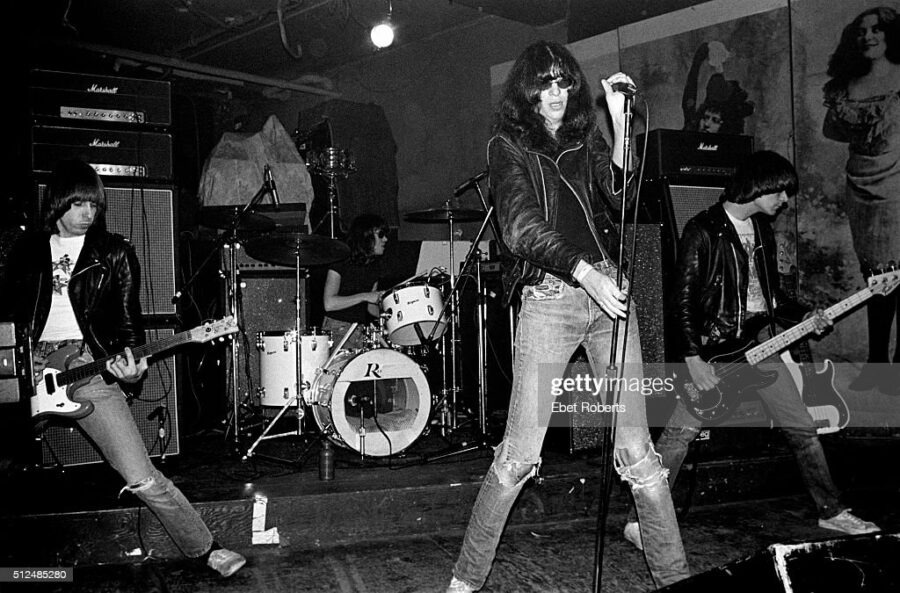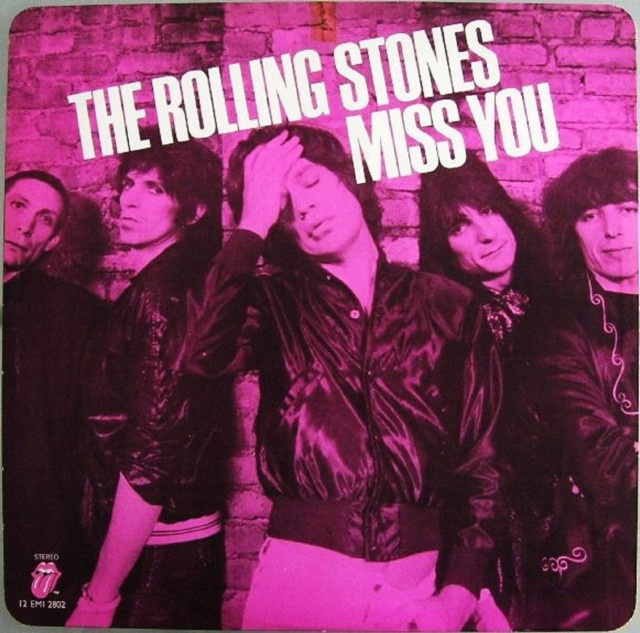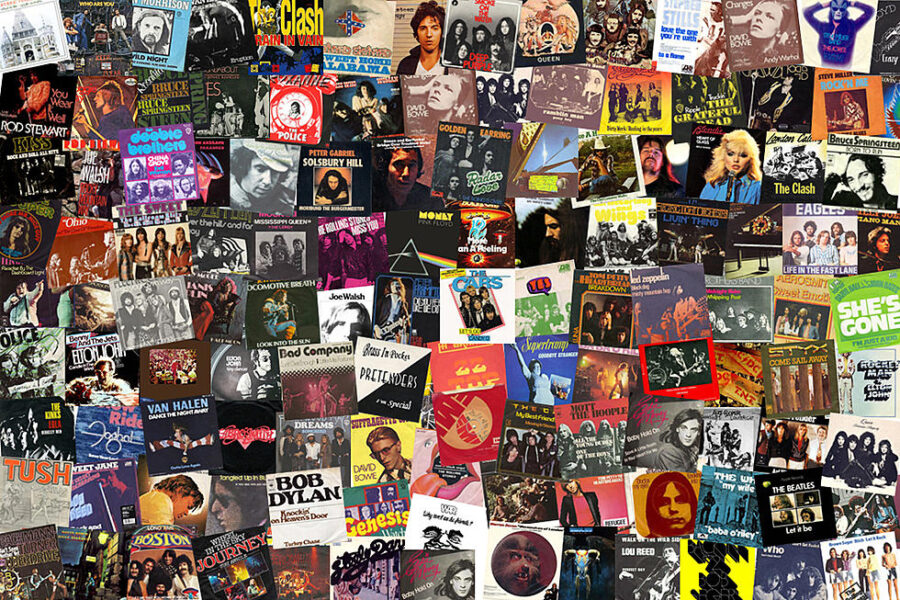Late Seventies: Disco, Punk, and Classic Rock Collide in a Burst of Music Diversity
The Rolling Stones’ “Miss You” got rockers moving on the disco dance floor.
A Musical Feast
In the late seventies, popular music was firing on all cylinders.
Disco music was born in New York City discotheques (literally French for “library of phonograph records”) that had become gathering places for an eclectic mix of Black, Latino, and gay club-goers. The DJ was central to this emerging dance culture. He or she spun a mix of rhythm and blues with an occasional Latin salsa, soaring harmonized vocals, a lush orchestral background, and a steady, pounding drum beat with an off-beat hi-hat pattern that got people moving on the dance floor.
Punk rock came along in the mid-seventies, born in the garage with attitude. Punk trailblazers sneered at FM-friendly mainstream rock as commercialized, formulaic, and timid. Where was the rock ‘n’ roll? Punks showed their fury with sped-up songs with stripped-down instrumentation, “fuck off” lyrics, and maybe three power chords of guitar aggression.
Classic rock, which took the insurgency in stride while “borrowing” some rhythmic moments, continued to pump out albums by its brightest stars.
The Rolling Stones’ Disco Gambit
The Rolling Stones’ song, “Miss You,” from the 1978 album Some Girls, took shape when Mick Jagger and freelance keyboardist Billy Preston started jamming at a Toronto nightclub. Drummer Charlie Watts said, “A lot of those songs like ‘Miss You’ on Some Girls…were heavily influenced by going to discos.”
Recording engineer Chris Kimsey remembers that bassist Bill Wyman “went to quite a few clubs before he got that bass line sorted out.”
The disco beat is undeniable on “Miss You.” In fact, the Stones release an extended version of the song, a “Special Disco Version” that ran over eight minutes, and was the Stones’ first dance remix on a 12-inch single.
But not every classic rock band took the disco bait.
The Era of Big Rock Albums
Remember albums? Some of the most beloved and best-selling rock albums were released in the late seventies. These might jog your memory:
- Frampton Comes Alive! (1976) After a youthful dalliance with the heavy metal band Humble Pie, British guitarist Peter Frampton found scant commercial success until his record label, A&M, convinced him to create a double live album of multiple shows. Frampton Comes Alive! was a breakthrough live recording, staying on the charts for 97 weeks. It was the number-one album of 1976 on its way to selling 20 million copies.
- Rumours (1977) Fleetwood Mac’s magnum opus album was an instant success, selling 10 million copies within a month of its release. The record’s numerous iconic singles (“Go Your Own Way” was prescient) were composed as two couples in the band decided to separate. That didn’t stop Rumours from selling over 40 million albums.
- Hotel California (1977) by the Eagles. More California pop? The title song, “Hotel California” is the Eagles’ best-known song and a concert staple. It won Record of the Year at the 1978 Grammys. With 32 million copies sold, Hotel California would rank as the Eagles’ best-selling album if it wasn’t for Their Greatest Hits (1971-75), with a reported 42 million worldwide sales.
- The Stranger (1977) and 52nd Street (1978) Billy Joel’s collaboration with producer Phil Ramone yielded a bounty of memorable songs. 52nd Street was the top-selling album of 1979. But The Stranger gave us that whistle in the title song and the deliciously raucous “Scenes From an Italian Restaurant.”
That’s a whole lot of record-buying. I did leave one out.
Saturday Night Fever
The biggest-selling album of 1978 was a soundtrack to the movie, Saturday Night Fever. The album consolidated the disco phenomenon sweeping America mostly through the talents of an Australian fraternal falsetto band, The Bee Gees, who joined the film project in post-production.
The Bee Gees–Robin, Barry, and Maurice Gibb–were already hitmakers when presented with a film about disco dancing. In 1978, the trio propelled disco music to unimaginable heights. In Billboard’s Top 10 singles for that year, The Bee Gees occupied number two, “Night Fever,” number four, “Stayin’ Alive,” and number six, “How Deep Is Your Love.” Brother and solo artist Andy Gibb took number one, “Shadow Dancing,” and number eight, “(Love Is) Thicker Than Water.”
I Will Survive
From the orchestral grooves of Gamble & Huff’s “The Sound of Philadelphia (TSOP)” to the Queen of Disco Donna Summer to KC and the Sunshine Band and Gloria Gaynor’s anthemic “I Will Survive,” disco had a good run in the late seventies. But there was another musical insurgency emerging that seemed like disco’s polar opposite.

Photo by Ebet Roberts/Getty Images. Punk rock band The Ramones perform at CBGB in New York City on March 31, 1977. Left to right: Johnny Ramone (1948 – 2004), Tommy Ramone (1949 – 2014), Joey Ramone (1951 – 2001), and Dee Dee Ramone (1951 – 2002). Talking Heads were also on the bill that night.
Punk Rock/New Wave
The Ramones joined bands such as the Clash, the Smiths, Minor Threat, Richard Hell and the Voidoids, the Dead Boys, and the New York Dolls as reluctant punk rock pioneers. Formed in 1974 in their native Queens, the Ramones were not related. However, their stage names became synonymous with the burgeoning late seventies punk rock scene.
Staring with Dee Dee Ramone’s signature, rapid-fire shout of “1-2-3-4!” the Ramones played their songs very fast and very short; most were clocked at around two minutes.
Their songs, or at least the song titles, suggested reckless abandon (or a desire to see a psychiatrist): “Blitzkrieg Bop,” (1976), “Sheena Is a Punk Rocker,” (1977), “I Wanna Be Sedated,” (1979), and “Rock ‘n’ Roll High School” (1979).
Blondie
As the calendar closed in on 1980, conventional “new wave” bands were topping the charts: the Cars, Blondie, the B-52s, and the Talking Heads come to mind. The Clash’s 1979 album London Calling, a masterpiece in any genre, was being called “important” by rock critics.
Here is a video of Blondie’s 1979 song, “Heart of Glass,” 3:42 in length, a song that straddles the line between new wave and disco, published by BlondieMusicOfficial via YouTube:
Coda
After three years of getting my ears assaulted in Army barracks by the likes of Black Sabbath, Deep Purple, Judas Priest, and Blue Oyster Cult, I got out in 1975 ready and willing to enjoy other sounds…different musical genres. Sure, I was a rocker who loved the blues but I was searching for something completely different.
it seems I was at the right place at the right time.
I fell in love on the disco dance floor. The music was romantic and delightful. After three years overseas, I embraced the surrounding hedonism.
At punk rock clubs, I enjoyed the intensity and bare-bones phrasing that united the crowd. After a while, I was pogo dancing with the best of them.
For me, the late seventies was the high-water mark of popular music. I have great memories.



















































































































